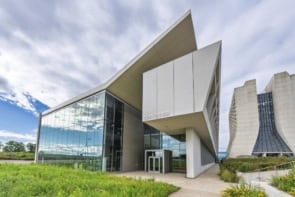France’s newest nuclear physics facility – the SPIRAL facility for radioactive nuclear beams in Caen – has accelerated its first beams.
However, this good news comes at a time when the budget for nuclear physics is shrinking, and more cutbacks to accelerator facilities are likely in the future. The Saturne accelerator in Saclay has already been closed. The Siloé neutron source in Grenoble has also been closed down.
SPIRAL is an extension to the GANIL heavy-ion accelerator, France’s largest nuclear physics facility. The laboratory is jointly run by the French research council (CNRS) and the atomic energy commission (CEA). SPIRAL re-accelerates radioactive ions produced when the GANIL beam strikes a fixed target, and the first radioactive beams are due to come on-line in November. In addition to nuclear physicists, SPIRAL will also used by astrophysicists and solid-state physicists.
Although SPIRAL is undoubtedly good news for the French nuclear physics community, the government’s policy of cutting back on large facilities is hitting the field hard. The director of the CNRS, Catherine Bréchignac, has identified accelerators and neutron facilities as the two areas where there may be more cuts in the future.
Meanwhile the closure of Siloé research reactor has deprived French researchers of one of their two national neutron sources. Although plans for a new source – which would come on-line in 2005 – are advanced, many scientists believe that it is time to review the country’s neutron scattering facilities. Until recently the CEA operated two research reactors: Osiris in Saclay, near Paris, and Siloé in Grenoble. The CEA uses the reactors to improve the performance of France’s nuclear power stations by testing different nuclear fuels and materials. Neutron beams from the reactors are also used for fundamental research.
The closure will also contribute to Europe’s looming neutron drought. Only two or three of the research reactors currently operating in Europe are expected to be working in early in the next century. The CEA is currently designing the Jules Horrowitz Reactor to replace Osiris and Siloé. The agency hopes that the two billion franc pressurized-water reactor will open at its Cadarache site in 2005.
However, not everyone agrees that a reactor-based neutron source is the best way forward. Indeed, most of the next-generation neutron sources currently being planned are spallation sources based on accelerators rather than reactors.



